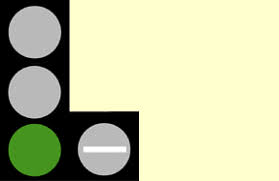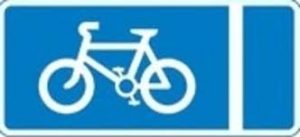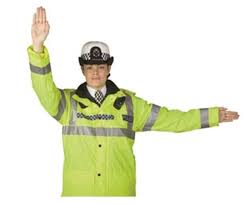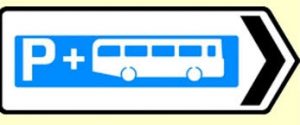How would you fare if you had to sit your test again? As it emerges half of learner drivers now fail the tough theory exam, try our 25 sample questions to see if it’s still safe for you to be on the roads
- The proportion falling the theory test has soared to its highest level in a decade
- Last year, only 47 per cent managed to pass a series of recently reformed tests
- The AA has complained that some of the new questions are now ‘quite obscure’
Never mind getting behind the wheel — the challenge that really strikes fear into learner drivers is the written theory test. The amount falling at this first hurdle has soared to its highest level in a decade — last year, only 47 per cent managed to pass it.
A number of changes designed to toughen up the test has included increasing the number of multiple-choice questions and no longer publishing them online in advance to stop people from memorising the answers.
The AA has complained that some of the questions are now ‘quite obscure’ — such as knowing what to do if someone suffers a burn in a road accident — which makes it hard for all but the most dedicated of learners to pass first time.
This may have led to more cheating. Last year, there were a reported 889 cases of fraud in practical and theory tests — a significant rise, says the Driver and Vehicle Standards Agency (DVSA).
For example, In July a 41-year-old woman was sentenced to 20 weeks in jail, suspended for 12 months, for hiding a radio headset under her hijab so that someone could supply her with the answers on her theory test, while others have used impersonators.
Would you pass the car theory exam today? Take our sample test to find out . . .
- Following a collision, someone has suffered a burn. The burn needs to be cooled. What’s the shortest time it should be cooled for?
- A) 5 minutes.
- B) 10 minutes.
- C) 15 minutes.
- D) 20 minutes.
- What colour are the reflective studs between a motorway and its slip road?
- A) Amber.
- B) White.
- C) Green.
- D) Red.
- You’re approaching a red light at a puffin crossing. Pedestrians are on the crossing. When will the red light change?
- A) When you start to edge forward on to the crossing.
- B) When the pedestrians have cleared the crossing.
- C) When the pedestrians push the button on the far side of the crossing.
- D) When a driver from the opposite direction reaches the crossing.
- What does this signal mean?
- A) Cars must stop.
- B) Trams must stop.
- C) Both trams and cars must stop.
- D) Both trams and cars can continue.
- You wish to tow a trailer. Where would you find the maximum noseweight allowed on your vehicle’s tow hitch?
- A) In the Highway Code.
- B) In your vehicle registration certificate.
- C) In the vehicle handbook.
- D) In your licence documents.
- You’ve just passed your practical test. You don’t hold a full licence in another category. Within two years, you get six penalty points on your licence. What will you have to do?
- A) Retake only your theory test.
- B) Retake only your practical test.
- C) Retake your theory and practical tests.
- D) Reapply for your full licence immediately.
- You’re driving on an open road in dry weather. What should the distance be between you and the vehicle in front?
- A) One car length.
- B) Two metres (6 ft 6 in).
- C) Two car lengths.
- D) A two-second time gap.
- At a junction, you see this sign partly covered by snow. What does it mean?
- A) Crossroads.
- B) Give way.
- C) Stop.
- D) Turn right.
- You are travelling at 50 mph on a good, dry road. What is your typical overall stopping distance?
- A) 36 metres (118 ft).
- B) 53 metres (175 ft).
- C) 75 metres (245 ft).
- D) 96 metres (315 ft).
- At a puffin crossing, which colour follows the green signal?
- A) Steady red.
- B) Flashing amber.
- C) Steady amber.
- D) Flashing green.
- You are turning right on to a dual carriageway. What should you do before emerging?
- A) Stop and apply the handbrake and then select a low gear.
- B) Check that the central reservation is wide enough for your vehicle.
- C) Position your vehicle well to the left of the side road.
- D) Make sure you leave enough room for a vehicle behind.
- What does this sign mean? A) Contraflow pedal cycle lane. B) With-flow pedal cycle lane. C) Pedal cycles and buses only. D) No pedal cycles or buses
- A) Contraflow pedal cycle lane.
- B) With-flow pedal cycle lane.
- C) Pedal cycles and buses only.
- D) No pedal cycles or buses.
- You see a pedestrian with a dog. The dog has a yellow or burgundy coat. This especially warns you that the pedestrian is . . .
- A) Elderly.
- B) Dog training.
- C) Colour blind.
- D) Deaf.
- For how long is a Statutory Off Road Notification (SORN) valid?
- A) Until the vehicle is taxed, sold or scrapped.
- B) Until the vehicle is insured and MOT’d.
- C) Until the vehicle is repaired or modified.
- D) Until the vehicle is used on the road.
- What does this signal from a police officer mean to oncoming traffic? A) Go ahead. B) Stop. C) Turn left. D) Turn right
- A) Go ahead.
- B) Stop.
- C) Turn left.
- D) Turn right.
- Given that one of the below is correct, what does the law require you to keep in good condition?
- A) Gears.
- B) Transmission.
- C) Door locks.
- D) Seat belts.
- You are travelling behind a bus that pulls up at a bus stop. What should you do?
- A) Accelerate past the bus.
- B) Watch carefully for pedestrians.
- C) Sound your horn.
- D) Pull in closely behind the bus.
- You may use front fog lights with headlights ONLY when visibility is reduced to less than . . .
- A) 100 metres (328 ft).
- B) 200 metres (656 ft).
- C) 300 metres (984 ft).
- D) 400 metres (1,312 ft).
- What does this sign mean? A) No parking for buses or coaches. B) Direction to bus and coach park. C) Parking area for cars and coaches. D) Direction to park-and-ride car park
- A) No parking for buses or coaches.
- B) Direction to bus and coach park.
- C) Parking area for cars and coaches.
- D) Direction to park-and-ride car park.
- What does this sign mean?
- A) Waiting restrictions apply.
- B) Waiting permitted.
- C) National speed limit applies.
- D) Clearway (no stopping).
- Braking distances on ice can be . . .
- A) Twice the normal distance.
- B) Five times the normal distance.
- C) Seven times the normal distance.
- D) Ten times the normal distance.
- For what percentage of all emissions does road transport account?
- A) 10 per cent.
- B) 20 per cent.
- C) 30 per cent.
- D) 40 per cent.
- What does this sign mean? A) End of restricted speed area. B) End of restricted parking area. C) End of clearway. D) End of cycle route
- A) End of restricted speed area.
- B) End of restricted parking area.
- C) End of clearway.
- D) End of cycle route.
- You can park on the right-hand side of a road at night . . .
- A) In a one-way street.
- B) With your sidelights on.
- C) More than 10 metres (32 ft) from a junction.
- D) Under a lamp-post.
- At an incident, it is important to look after any casualties. When the area is safe, you should . . .
- A) Get them out of the vehicle.
- B) Give them a drink.
- C) Give them something to eat.
- D) Keep them in the vehicle.
Sample questions from the DVSA. To pass the theory test, learners must answer at least 43 out of 50 questions correctly.
- Answers: 1b, 2c, 3b, 4b, 5c, 6c, 7d, 8c, 9b, 10c, 11b, 12b, 13d, 14a, 15b, 16d, 17b, 18a, 19d, 20a, 21d, 22b, 23b, 24a, 25d
Check out our free interactive theory help on our website!
 Buy Gifts Vouchers Here
Buy Gifts Vouchers Here Intensive Driving Courses
Intensive Driving Courses Driving Test Booking Services
Driving Test Booking Services









